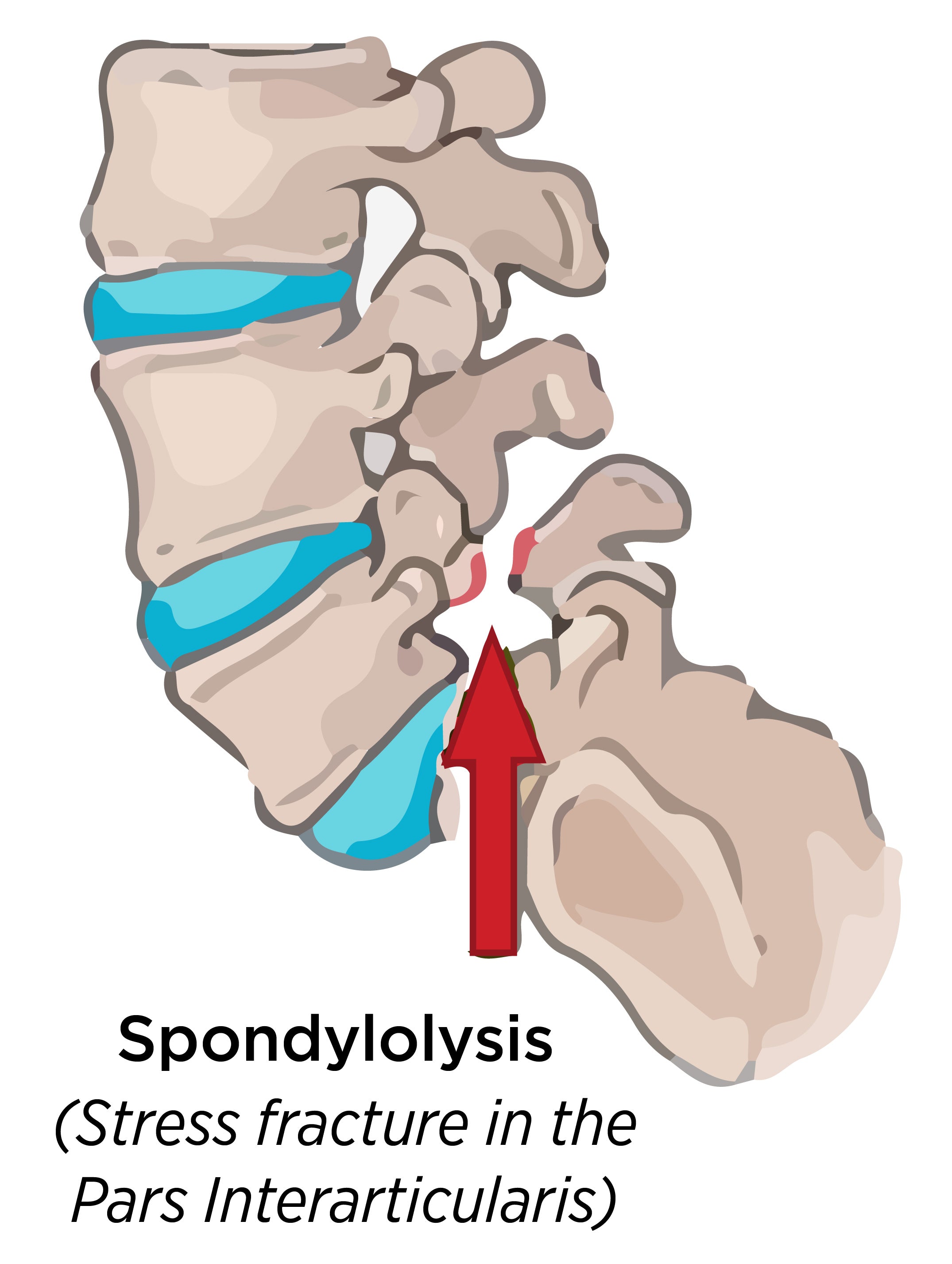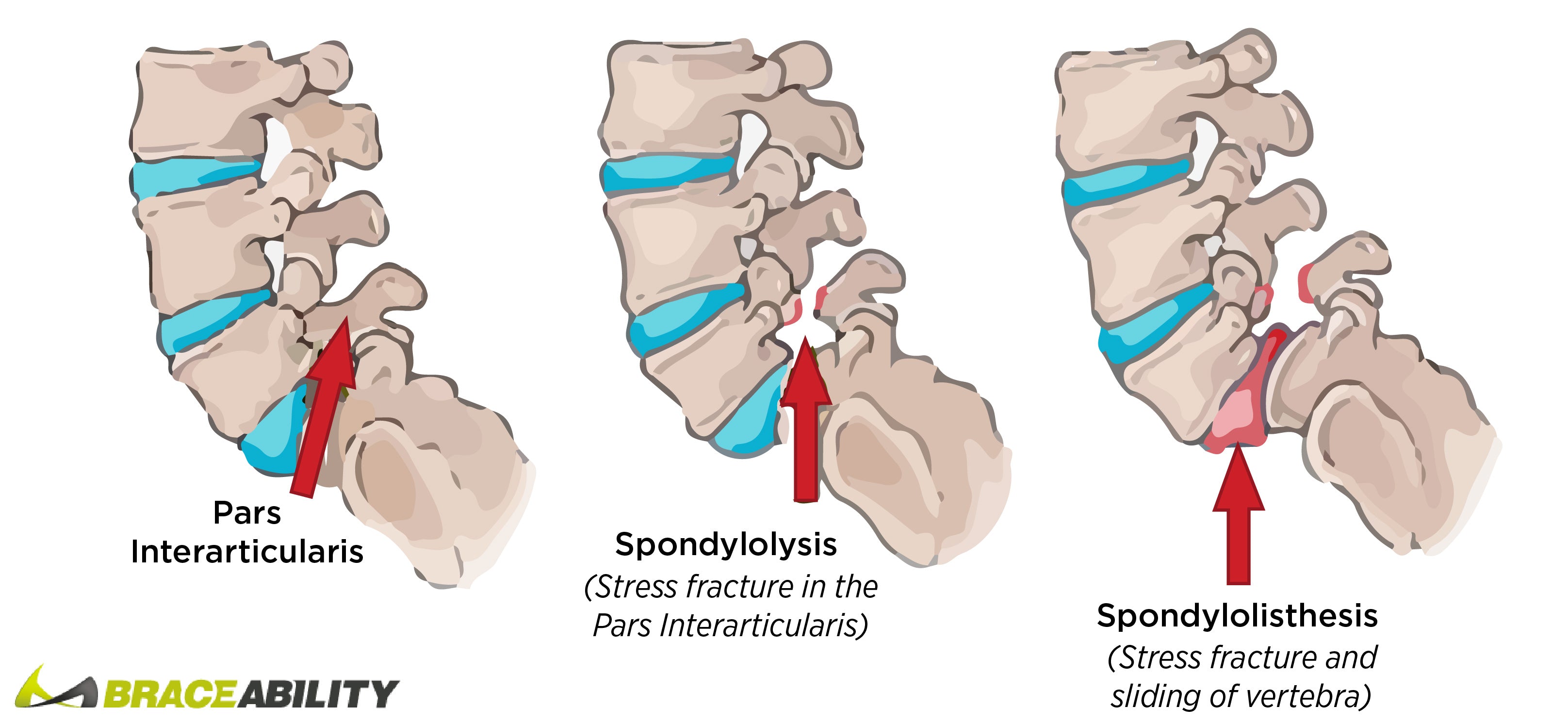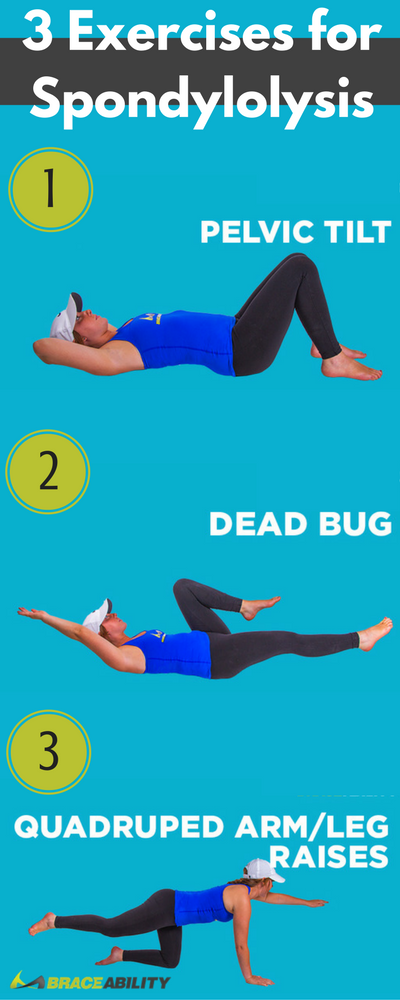Spondylolysis
Spondylolysis (pronounced spon-dee-low-li-sis) is a painful back condition which can limit your ability to move and perform normal activities. If not treated, it can become worse and lead to other back injuries such as spondylolisthesis. Even though the name sounds strange, spondylolysis is actually pretty common, especially in older men and women who suffer from spine degeneration, and in teenagers who play contact sports. But before we explain the causes, symptoms, and discuss treatments for Spondylolysis, let's take a step back so you can understand what is actually going on in your spine if you have this condition.
What is Spondylolysis?
But first, let’s take a step back, what exactly is spondylolysis? Spondylolysis refers to a defect of the bones of the spine known as vertebrae. This defect occurs in the pars interarticularis, a small, bony arch toward the back of the spine. This bone segment joins the facet joints of the spine, which can be cracked or fractured.

The definition of spondylolysis must also point out that the defect may be on one side of the pars interarticularis (known as unilateral spondylolysis) or on both sides (known as bilateral spondylolysis).
The most common form of this is L5 spondylolysis (which affects the fifth, lowest lumbar vertebra), followed by spondylolysis of the fourth vertebra (L4). But spondylolysis can also occur in other areas of the spine and other discs of the lumbar back, though cervical spondylolysis and thoracic spondylolysis are far less common than lumbar spondylolysis.
What Is the Cause of My Spondylolysis?
Most often, spondylolysis is caused by stress fractures. In such cases, this is known as isthmic spondylolysis. The vertebrae are most vulnerable to this when the pars interarticularis sustains force when it is in an extended position. This might occur when you perform a jumping motion, for instance.
Another spondylolysis cause can be present from birth (dysplastic or congenital spondylolysis) in which your vertebrae may be thinner than normal vertebrae, making it more prone to fractures. It also may occur due to degenerative changes in the spine or trauma such as a fall or accident can also attribute to spondylolysis.
As mentioned previously, those who are older or who play high-contact sports are at a great risk for spondylolysis compared to others. Typically, this is in adolescents between the ages of 10 to 15 who overuse or hyperextend their lower back due to sports and activities such as gymnastics, diving, football, or weightlifting.
For older individuals, degeneration of the facet joints and the discs in their spine puts them at a greater risk in developing this condition. In addition, having osteoporosis (which is an effect of the aging process) makes you more susceptible to stress fractures or breaks.
Spondylolysis Signs & Symptoms
The symptoms of spondylolysis typically include pain in the low back, mid-back or neck, depending upon where the problem area lies. You might also experience the narrowing of the spinal canal, known as spinal stenosis, a possible side effect.
Spondylolysis or spondylolisthesis can lead to a number of conditions characterized by a pinched or compressed nerve, such as sciatica, which causes radiating pain, numbness, tingling or weakness in the legs, hips, buttock, shoulders, etc., depending on what nerve is compressed.
All of this can lead to more troubles if it prevents you from partaking in physical activity. An inactive lifestyle can lead to bone density loss, weight gain or the loss of muscle strength and flexibility.
In some mild cases or in adolescents, no symptoms or pain may be evident until later in life or during a growth spurt.
Spondylolysis vs. Spondylolisthesis (spondylolysis)
As you might guess by the name, spondylolysis and spondylolisthesis are related conditions. But what’s the difference between the two?
To refresh your memory, spondylolysis is the separation of the small bony arch located toward the back of your spine. This ultimately refers to a stress fracture, which leads your bone to weaken with the result of it shifting out of place. When this occurs, the progression from spondylolysis to spondylolisthesis happens. Spondylolisthesis refers to the slipping of a vertebral body out of position forward or backward onto the one below it. Basically, spondylolysis is the first grade of spondylolisthesis.

Learn about the other grades of spondylolisthesis and the treatment options for each condition.
To break this down even further, isthmic spondylolisthesis and spondylolysis are terms that are commonly used interchangeably. Isthmic spondylolisthesis is a defect in the pars interarticularis causing stress fractures in your spine, which is the definition of spondylolysis.
Can I Prevent Spondylolysis Pain?
Unfortunately, in many cases, spondylolysis can’t be prevented. Luckily, there are ways to reduce your risk of fractures or further slippage of your spine. It’s important to speak to your doctor as soon as you believe you may have injured your back or if you think you might be suffering from spondylolysis.
In addition, doing exercises to help strengthen your back, abdominal, and shoulder muscles is a very important aspect of protecting your spine from injury. By practicing good posture, you can reduce the chance of your vertebrae slipping or prevent extra stress or tension on your lumbar back area.
Try to avoid exercises that might make you more prone to this condition or may harm your back, such as twisting or bending, high-impact activities, and weightlifting. Make sure you are warming up properly if you are going to play such sports and are using the proper equipment or techniques.
Can Being An Overweight Individual Lead to Spondylolysis?
In general, people who are overweight are at a much greater risk to suffer from back and spine pain, or any muscle or joint issues.
Essentially, the excess weight carried by an obese person puts additional strain and pressure on the spine. Thus, increasing potential injury to the spine and back.
People who suffer from obesity have an increased risk for problems specifically in the lumbar region or L4-L5 joint. This leaves them more prone to spondylolysis as this condition most commonly occurs in your lumbar or lower back region. Being larger individual forces your spine to be pushed out of its normal position.
Read more about other back conditions you may be more susceptible if you are a plus size individual.
How To Treat Spondylolysis
A physical exam, as well as a spondylolysis x-ray, can be used to diagnose this condition. If nerve pressure is also involved, then a CT or MRI scan may be needed, too. This can show if there is activity or movement associated with the pars defect (acute spondylolysis) that is causing the low-back pain or if it is inactive (chronic spondylolysis) and the source of the back pain is likely elsewhere.
More commonly, spondylolysis is treated using conservative methods, and surgery is rarely necessary. The first line of defense typically involves giving the back a rest from the stressful activity and possibly using a spondylolysis back brace to help immobilize the region. Such braces can provide support to the low-back while limiting your ability to move in damaging ways.
Anti-inflammatory medications are often recommended to reduce the amount of pain and swelling in the back. Steroid injections are another common way to help reduce swelling and inflammation as this help ease your pain. Physical therapy is often incorporated into a spondylolysis treatment regimen as well to help improve flexibility and strengthen your muscles.
You may need to go back for periodic x-ray scans to make sure the condition has not worsened to spondylolisthesis.
Treatment Exercises & Stretches for Spondylolysis
These spondylolysis exercises focus on strengthening and improving the flexibility of both the back and especially the abdomen. Strengthening these muscles can help them stabilize the low back and teach movement patterns that reduce the amount of movement in the problematic pars region. Make sure that while doing exercises or stretches, you ease into the amount or level of activity to reduce the chance of further injuring your back.

Here are a few exercises and stretches to help ease your pain from spondylolysis:
- Pelvic tilt: Lie on your back with your legs bent and feet flat on the floor. Next, use your abdominal muscles to lift your tailbone off of the floor while pressing your lower back on the floor. Hold this for 5 seconds then lower. Repeat 10 times.
- Dead Bug: Lie on our back with your knees bent, feet flat on the floor and arms at your sides. Draw your belly button toward the spine as you tighten your abdomen. Keeping your legs bent, lift one of them off the floor and hold it for five seconds before lowering it to the ground and lifting the other leg for five seconds. Next, lift one arm over your head; hold it for five seconds then lower it. Repeat with the other arm.
- Quadruped arm/leg raises: Begin on your hands and knees. Tighten your abdominals and raise one arm while raising the opposite leg. Hold this for 5 seconds, then repeat with the opposite arm and leg. Complete up to 10 repetitions on each side.
Exercises for spondylolysis and spondylolisthesis are very similar and are usually interchangeable because they focus on the same region of your back. For more exercises, check out our Spondylolysis blog to learn more!
Surgical Spondylolysis and Spondylolisthesis Treatment
In some cases, conservative treatment methods are ineffective in easing spondylolysis pain and surgery may be needed, though this is a rare occurrence. This may also be the case if spondylolysis fractures widen and the condition progresses to a more advanced grade of spondylolisthesis.
Surgery for these conditions usually involves fusing the vertebrae of the spine together with bone grafting, along with screws, rods, etc., to hold the spinal bones together. The goal of this is to stabilize the areas of the spine that are slipping.
Another option is a laminectomy, which involves the removal of the top part of the vertebra (the lamina) to reduce pressure on compressed nerves or to ease pressure from a herniated disc. This is typically used with adults who have significant stenosis of the spine.










